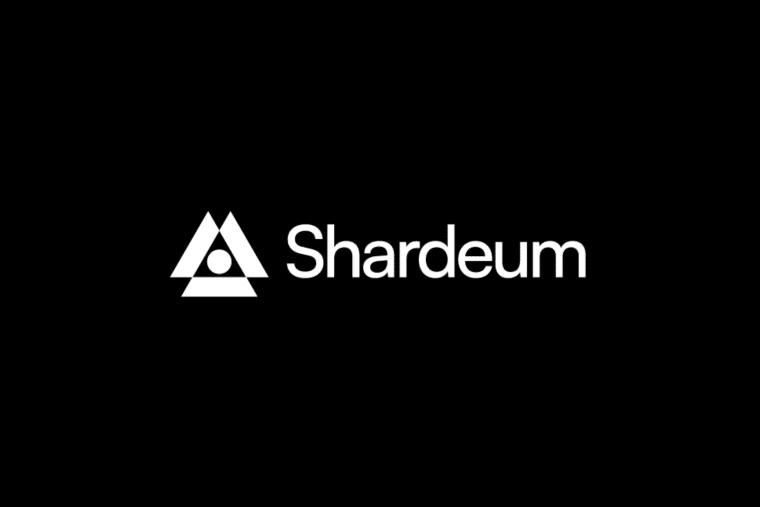The crypto industry is famous for its use of innovative incentives to drive mass adoption.
One proven model is token airdrops – the free distribution of fresh-minted crypto assets to select groups. Airdrops reward early adopters, raise awareness, and seed active user bases critical for fostering ecosystem growth.
This may not seem all that exciting, but many of these airdrops made crypto users 10s of thousands of dollars or more. That’s why you should be prepared this time around.
As blockchain interoperability expands in 2024, cross-chain projects and Layer-2 scaling solutions are leading the charge on highly anticipated airdrops.
Savvy crypto holders stand to benefit from these free token giveaways by taking early action.
What Are Crypto Airdrops and Why Do They Matter?
A crypto airdrop occurs when a blockchain project gives out its token (often its governance token) to specific users. The eligibility criteria vary, but the most usual targets are active ecosystem participants, app users, or loyal community members.
The free token allotments help kickstart trading activity and decentralized participation in the nascent network.
Airdrops commonly aim to:
- Reward early adopters for using new blockchain-based solutions.
- Incentivize holding long-term instead of quick selling.
- Decentralize governance control away from the founding team.
Two pioneering examples that highlighted the marketing and monetary power of targeted token distributions were Uniswap and ApeCoin.
Uniswap: The top decentralized exchange (DEX) startled DeFi users by granting its UNI governance token to early liquidity providers in 2020.
As UNI became listed in exchanges, the price of its native token skyrocketed from the original $0 to over $41 at its all-time high. The average airdrop was worth a whopping $12,000 at the peak. Some recipients scored over $1 million in earnings from this surprising reward.
ApeCoin: In March 2022, the exclusive Bored Ape Yacht Club NFT collection further cemented airdrops as a Web3 must-have. All BAYC and Mutant Ape (MAYC) holders received the new Ethereum-based APE token. BAYC holders got just over 10,000 tokens worth just under $400,000 at its peak. MAYC holders got 2042 APE, which sold for over $80,000 at its all-time high.
The token stash was valued at nearly $6 billion combined at APE’s peak, demonstrating its immense value-creation potential.
With a proven model to engender community loyalty while propelling adoption, both legacy and upstart networks are planning to hold token giveaways for 2024 to fortify their niches.
If you don’t want to miss the next 5 figure airdrop, you need to prepare. Here are the confirmed and rumored airdrops you need to be following.
Top 4 Confirmed Airdrops for 2024
If you want to go for the guaranteed airdrops, here are the top 3 of 2024:
1. Manta Network – Privacy-Focused Dual Chain Ecosystem (MANTA)
The Manta Network operates advanced zero-knowledge applications on an Ethereum sidechain called Manta Pacific and a stand-alone layer-1 called Manta Atlantic. Bringing enterprise-grade privacy and confidentiality to Web3 is Manta’s main focus.
Manta takes data concealment further by avoiding payment tracing on its non-custodial DEX Haven, built on zero-knowledge proof technology. Users can make transactions pseudo-anonymously without any leaked metadata that can be used to link operations to wallets. The dual chain architecture also facilitates private smart contracts across permissioned connections called Space.
For Web3 purists who lean toward anonymity and censorship resistance alongside usability, Manta checks all the boxes. To further decentralize control and governance, Manta plans a fixed token supply distribution:
- 30 million MANTA tokens (3%) – Airdropped to active ecosystem participants.
- 297 million MANTA tokens (30%) – Awarded to investors/backers.
- 683 million MANTA tokens (67%) – Community treasury for staking rewards.
Manta has already taken its snapshot, but if you have used the platform or other zkapps, you may still be eligible. You can claim here.
2. Marinade Finance – Liquid Staking Module on Solana (MNDE)
Marinade emerged as a flagship DeFi protocol on Solana by simplifying staking. Users receive mSOL tokens representing staked SOL while unlocking trading/lending capabilities.
Staked Solana’s tokens contribute to the network’s Proof-of-History (PoH) consensus and earn interest, but they can’t be used or transferred while staked. Marinade made it possible to make locked assets liquid. mSOL tokens function like regular SOL but also yield staking rewards, similar to Lido on Ethereum.
There’s no hidden centralization either.
Marinade distributes the staking rewards it receives to users after deducting swapping fees and treasury savings. This solution is both non-custodial and decentralized.
Marinade’s native MNDE token allows governance participation. However, MNDE distribution also focuses on rewarding ecosystem proponents. Hence, Marinade introduced a limited-period “Proof-of-Participation reward” consisting of 1 MNDE earned per hour for each staked mSOL or SOL logged:
- Minimum Claim: 1 MNDE
- Reward Pool: 300,000 MNDE
- Duration: January 1st to March 31st 2024.
All you have to do to get in on this airdrop is to stake SOL on Marinade (at your own risk) and start earning MNDE. You can get even more tokens by referring friends too. Here’s the platform’s full guide on the program.
3. Shardeum – EVM-Compatible Sharded Layer 1
Shardeum sets sights on outpacing fellow layer-1 Ethereum killers by relying on sharding.
Sharding splits a blockchain into smaller interconnected datasets, shards, each hosting a unique state and transaction group. Cross-shard communication maintains cohesion through Proof-of-Stake consensus rules.

This division of labor unlocks unlimited parallel processing without compromising security. Thus, sharding blockchains can handle higher volumes with faster speeds and cheaper gas fees.
Shardeum claims that its dynamic shard allocation achieves perpetual scalability and minimal fees out of the gate.
An EVM foundation also lets developers migrate Solidity projects seamlessly. Dual native tokenomics will be used to foster staking capabilities and governance rights.
Of its 10 billion total supply, Shardeum pre-allocated 5% toward community airdrops for active testnet participants through early 2024.
4. Starknet – ZK-Rollup Layer 2 With Cairo Programming Language
As blockchains pursue scalability, Starkware’s StarkNet leads innovation in zero-knowledge proofs. ZK-Rollups bundle transactions off-chain and generate cryptographic proofs to verify transaction validity. This compresses data for the mainnet to enable faster and cheaper transactions.
StarkNet aims to overshadow competitors by using Cairo, a Turing-complete ZK-friendly coding language. It provides full EVM support but with quicker verification for specialized use cases like DeFi.
Planned upgrades include Quantum-secure proofs and the permissionless StarkEx DEX. Native governance and fee-capturing make an airdrop likely to incentivize the pivot.
Early indications suggest that the rewards will go primarily to Cairo coders and hackathon participants, but users will likely get an airdrop too. Crypto YouTuber Boxmining prepared a full breakdown of how to best prepare for a potential StarkNet airdrop.
Top Unconfirmed Airdrops on the Radar
Aside from the projects whose airdrops have been reportedly confirmed for the year, there are others that investors are keeping an eye on to take advantage of likely airdrops that may be set to occur, given some hints provided by their founders or usage/popularity indicators.
Unconfirmed airdrops are generally much more profitable than confirmed ones because they can’t be farmed as easily by bots and virtual assistants.
1. Token Metrics – Crypto Asset Rating Platform (TMETRICS)
The crypto research firm Token Metrics runs advanced artificial intelligence modeling for rating and predicting crypto asset viability.
It issues weekly picks using multi-variable statistical analysis like momentum and social volume against final human confirmation. An overall blended score called CAPS helps retail traders make data-backed portfolio decisions.
While public transparency keeps ratings honest, Token Metrics’ functional tokenization largely remains unclear despite its 70,000+ weekly users. The project’s founder, a popular YouTube crypto influencer named Ian Balina, hinted during a YouTube AMA that an airdrop serving platform contributors may be slated for 2024.
The Token Metrics token (TMETRICS) will likely feature governance rights and staking abilities.
No official details have been released yet on snapshot or distribution dates or claiming procedures. Keep an eye on Token Metrics’ social media and YouTube channels for updates.
2. MetaMask – Leading Web3 Wallet/Browser Extension
Non-custodial wallets provide users with complete asset control and protect them from threats, including exchange hacks and rug pulls. MetaMask dominates this niche across desktop and mobile, supporting hardware integration. Not only can users manage Ethereum tokens but also transact NFTs and access decentralized applications.
Recent upgrades equipped MetaMask with multi-chain swaps, cross-chain bridges, and direct fiat on/off ramps through Transak. The self-sovereign and private Web3 wallet is pushing hard to achieve mainstream adoption of decentralized solutions.
The project’s founding firm, ConsenSys, has long hinted that a MetaMask token is inevitably poised to function through a scheme of decentralized governance. There’s an appetite for an airdrop or liquidity mining rewards to accompany it. No details are available yet about the timing or size of the airdrop, but governance goals are hinting toward an upcoming event soon.
Joe Lubin, founder of Consensys which owns Metamask, has confirmed that there will be a token. pic.twitter.com/vPjd51CqtJ
— Corleone (@corleonescrypto) November 14, 2022
This is perhaps the most anticipated airdrop of all time (if it ever comes to pass). Because MetaMask is such an important player in the crypto space, the value of an airdropped token could be immense.
However, it would likely be split among a massive user base so that may make the average airdrop value smaller.
To prepare for this potential airdrop, you can use all of Metamask’s main features, like its token swap and bridge functions. Some airdrop farmers have also donated a few dollars through Gitcoin and signed up for Infura (both owned by ConsenSys).
3. zkSync 2.0 – ZK-Rollup Layer 2 for Ethereum
Scalability aside, maybe Ethereum’s most prominent critique is its volatile transaction fees. Its bidding structure makes sending assets a costly endeavor during periods of high network congestion.
Enter zkSync, a zero-knowledge proof layer-2 network promising low and predictable Ethereum transaction fees. zkSync settles transfers for fractions of a penny by batch processing ‘commits’ off-chain and then generating compact fraud-proof receipts.
Developers can migrate projects easily by using the Ethereum Virtual Machine (EVM) while users get an intuitive Metamask-style wallet. Adoption is the main hurdle to onboarding Ethereum’s entire liquidity pool. Hence, developers hint at a native token for decentralized governance, staking, and liquidity rewards.
Boxmining wrote up a great list of ideas to prepare for this potential airdrop in a recent blog post.
Closing Thoughts
Token airdrops continue to drive mass adoption in the crypto industry, rewarding early adopters and fostering growth.
With 2024 bringing exciting opportunities from projects like Manta Network, Marinade Finance, Shardeum, and Starknet, now is the time to prepare.
In addition to these confirmed airdrops, keep an eye on potential ones from Token Metrics, MetaMask, and zkSync 2.0 for even more opportunities.
Pro tip: Want to secure your new airdropped tokens in a safe wallet? Best Wallet is Business2Community’s top choice for security and ease-of-use. Learn more.

